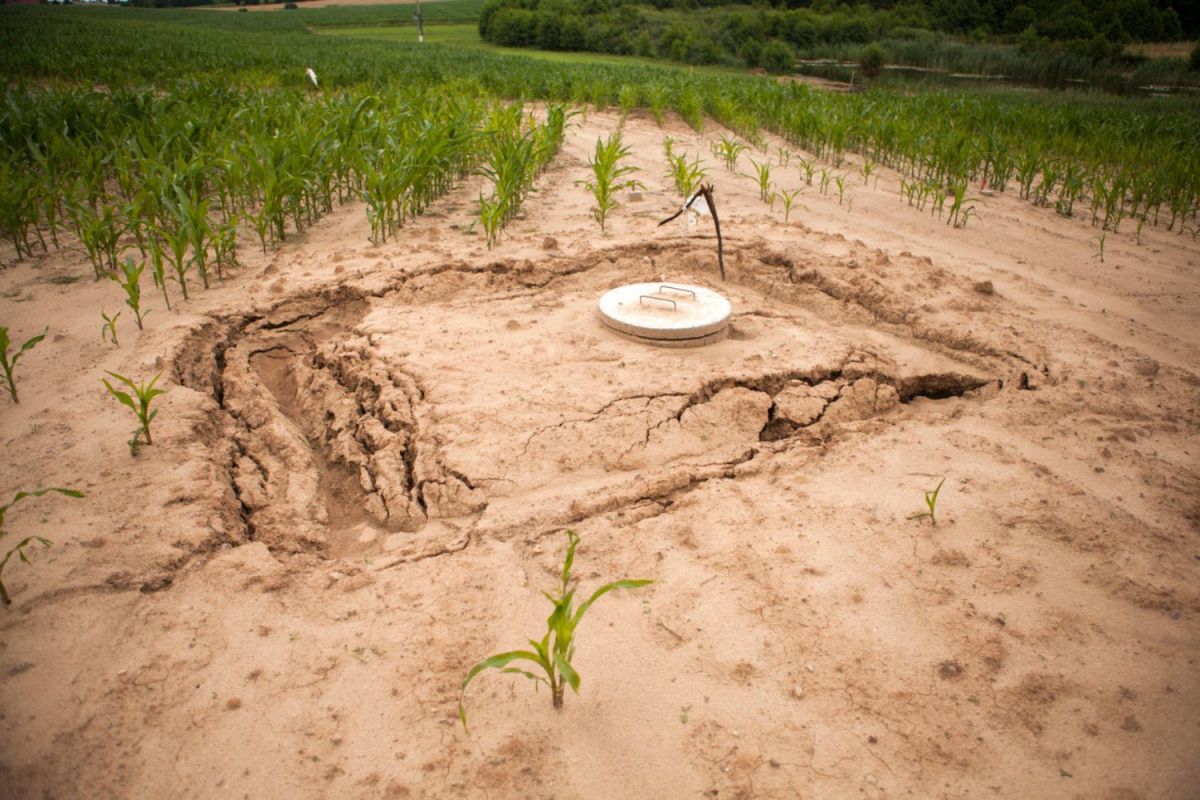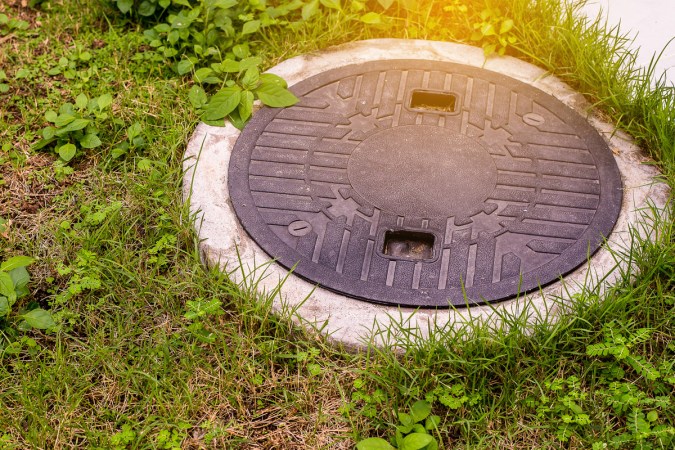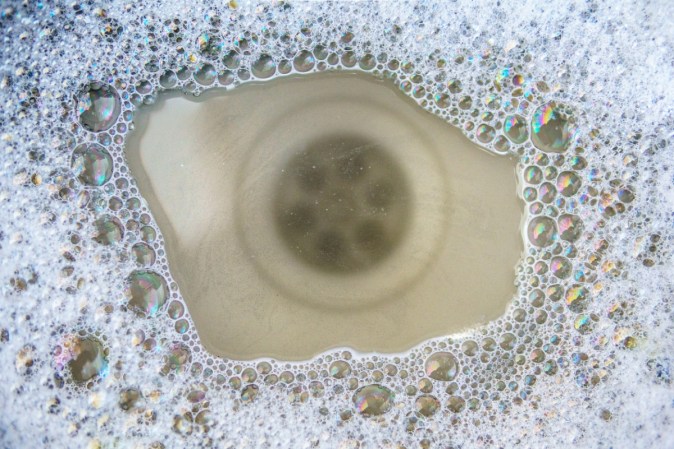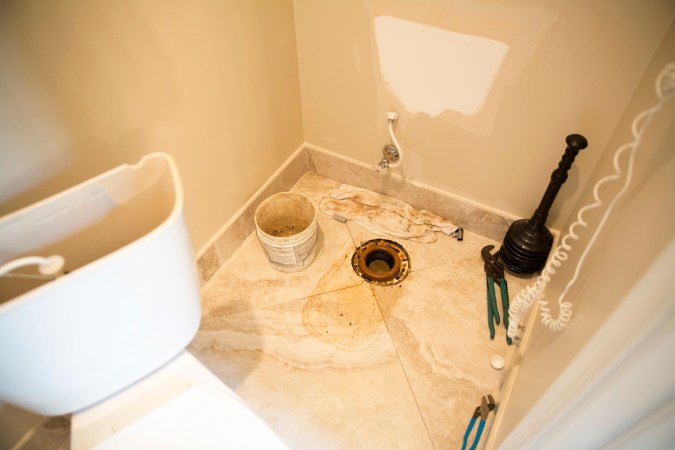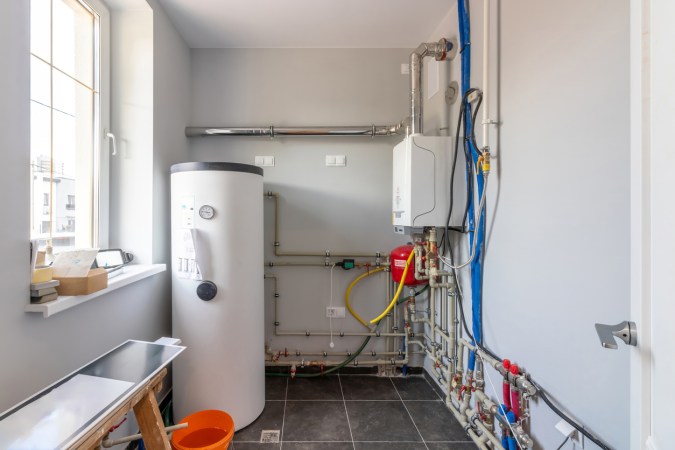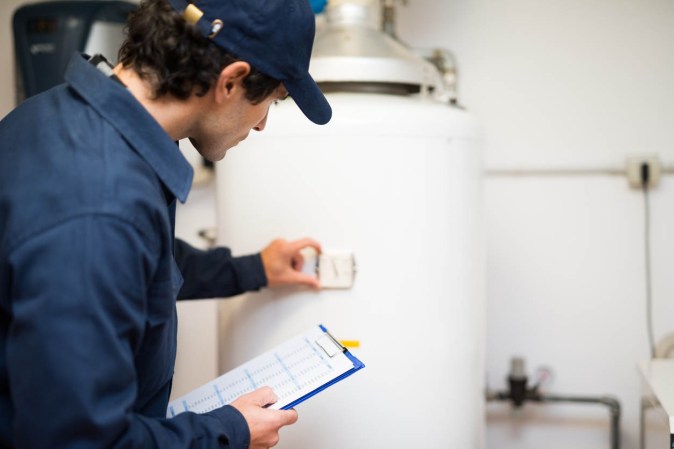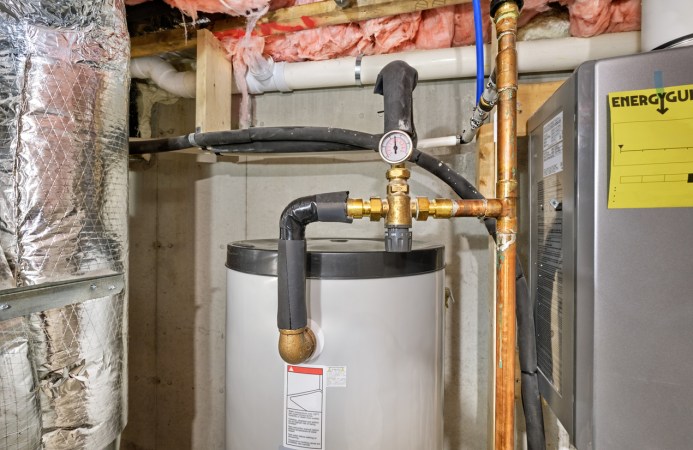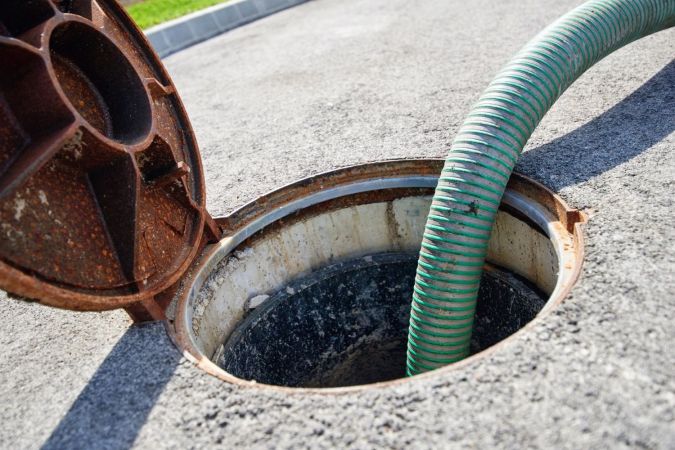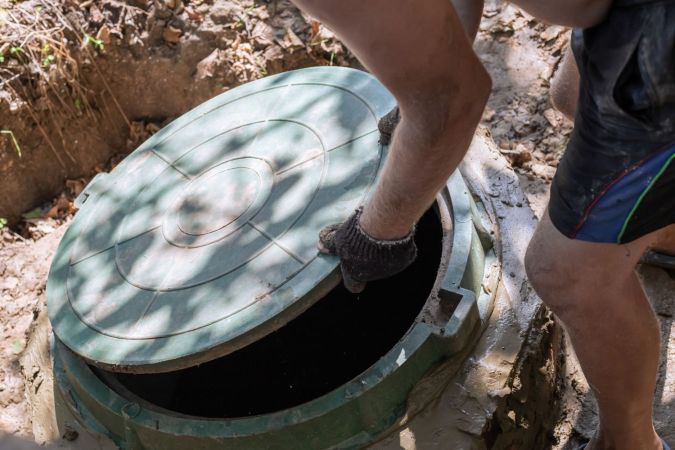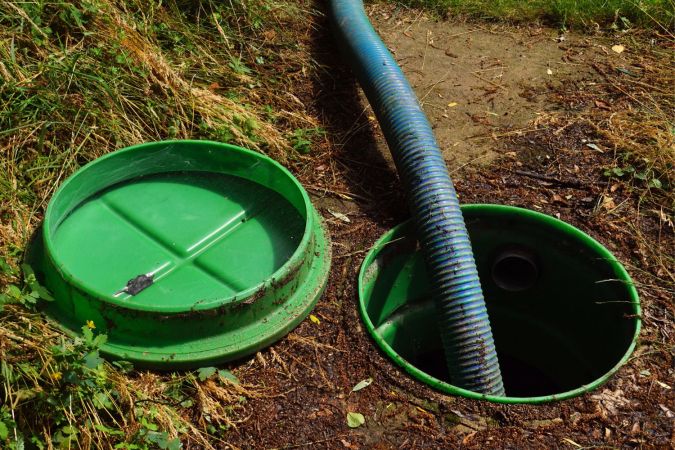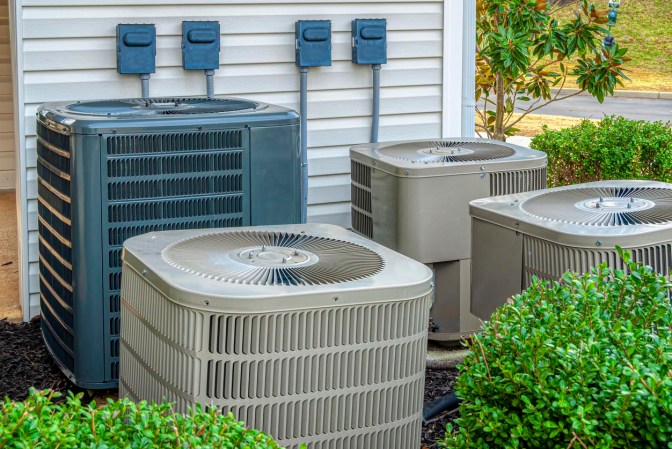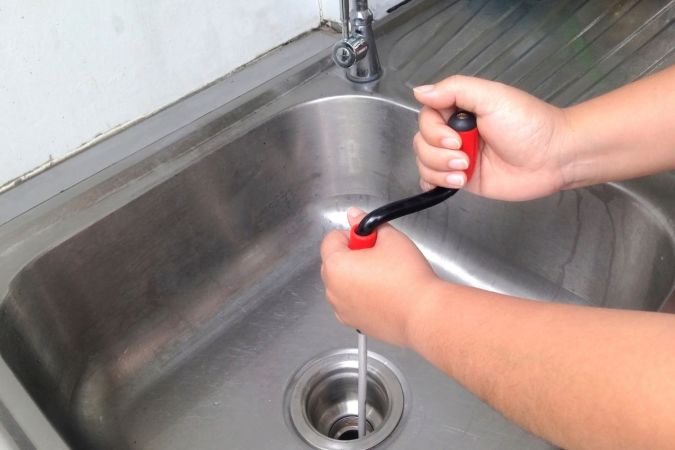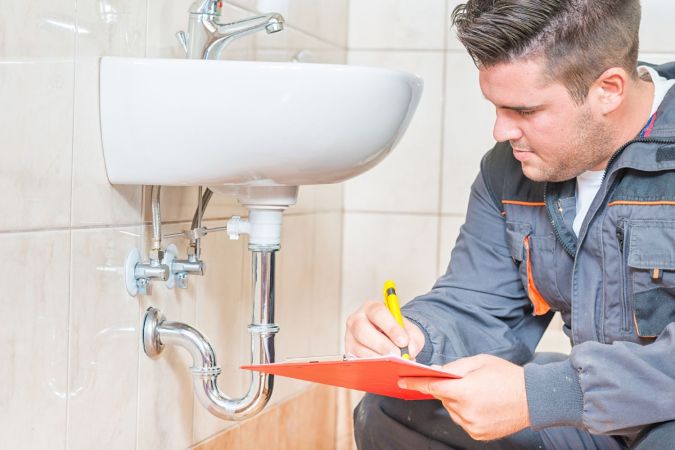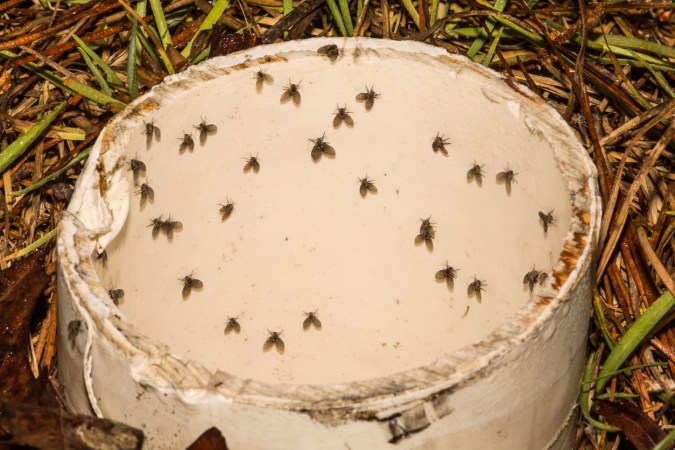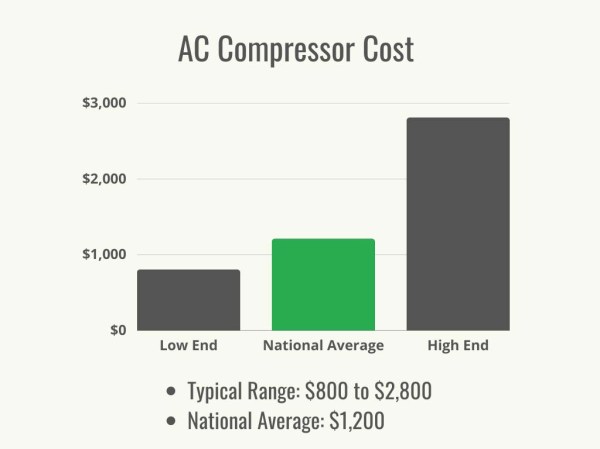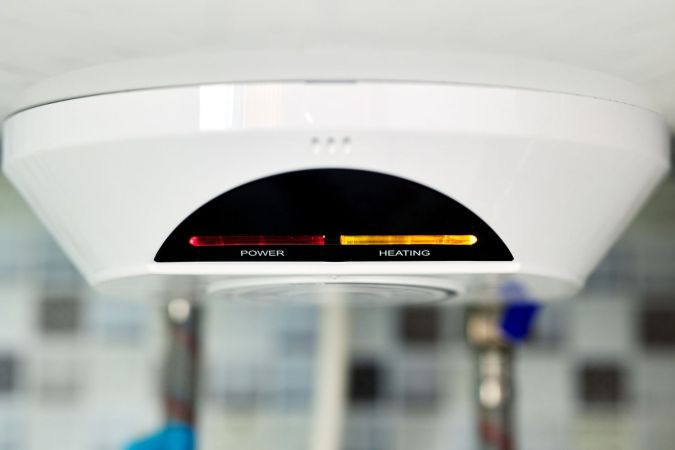We may earn revenue from the products available on this page and participate in affiliate programs. Learn More ›
Highlights
- The average cost to replace a septic tank and drain field is $6,000, though homeowners could spend between $2,000 and $20,000.
- The wide cost range for septic tank replacement cost is due to several important factors, such as the size and type of system, labor and permits, site accessibility, testing, among others.
- Homeowners will need to consider a replacement job if certain circumstances exist: pooling water or sewage, foul odors near the drain field, slow-draining pipes, a patch of unusually green grass, or water contamination.
- For legal reasons, in most areas, homeowners are not allowed to install septic systems, since it’s critical to follow proper safety and environmental protocols to prevent wastewater contamination.
Knowing how septic tanks and drain fields work is important for homeowners with homes that aren’t connected to a public sewer system. A septic tank collects and treats waste while the drain field filters the treated water back into the ground. However, these components don’t last forever.
Over time, a septic tank, drain field, or an entire septic system might need replacement due to wear, damage, or capacity issues. As reported by Angi, the average cost to replace a septic tank and drain field is $6,000, though replacement can be as little as $2,000 or as much as $20,000.
“Understanding the costs and local codes associated with installing a septic system is crucial,” explains Jimmy Hiller, CEO of Happy Hiller, a plumbing, electrical, and HVAC company with locations in Alabama, Florida, Kentucky, and Tennessee. “The total cost can vary widely based on factors such as location, soil type, system size, and the type of system chosen. These costs encompass not only the septic tank and drain field but also the expenses for permits, soil testing, and any necessary landscaping post-installation. Moreover, due to the stringent regulations governing these systems, homeowners must ensure their installation adheres to all applicable local health and environmental regulations.”
Homeowners with septic tanks on their property are encouraged to learn about the most influential septic system cost factors, money-saving advice, and ways to find a qualified septic system company.
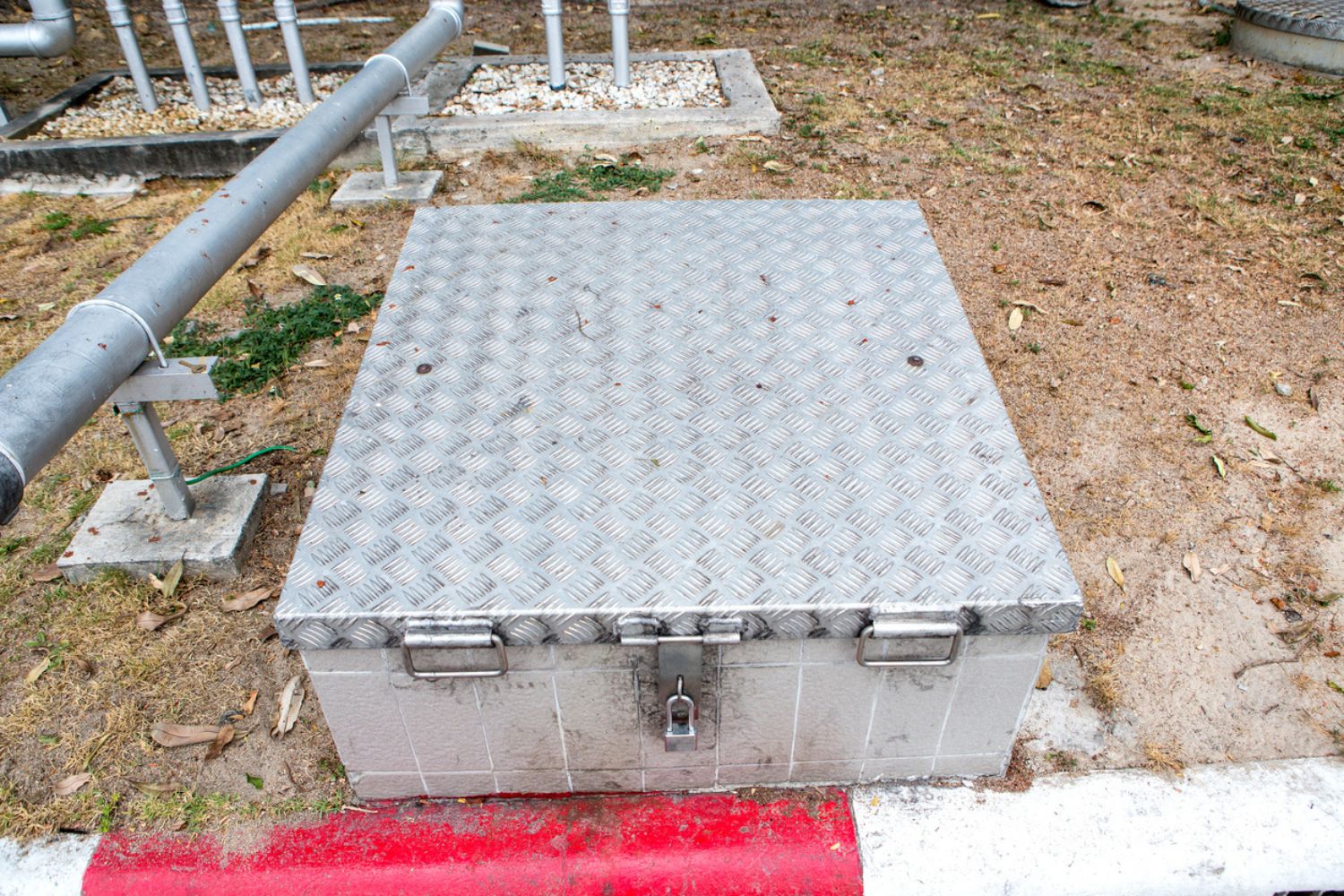
Factors in Calculating the Cost to Replace a Septic Tank and Drain Field
The cost to replace a septic tank and drain field can have a broad price range due to several key factors. While the national average is around $6,000, differences in local labor rates, system size and type, and material choices can influence regional averages.
Septic Tank and Drain Field Size and Type
Size and type are two of the most important factors to keep in mind when homeowners are budgeting for the cost to replace a septic tank and drain field. To start, larger septic tanks and drain fields typically cost more to replace due to the increased labor, time, and materials needed. Additionally, larger septic tanks tend to be heavier and more difficult to install than small septic tanks, causing most contractors to charge extra for the additional installation challenges. Finally, there are several different types of tank systems and drain fields to choose from, all of which come with unique advantages and price points.
- Aerobic systems require less land but pump oxygen into the system to promote bacterial growth to break down the waste ($7,000 average cost with installation).
- Anaerobic systems are the most common and need larger drain fields for the anaerobic bacteria to break down the waste in the field ($5,000 average cost with installation).
- Mound drain field systems are more expensive than other systems and have a mound of sand that sits on top of the system’s pipes. This method is helpful in areas with high water tables ($12,000 average cost with installation).
- Concrete tanks are the most common type of septic tank and can resist cracking for up to 20 years, though inspections on a regular basis are recommended ($700 to $2,000 average material cost).
- Plastic tanks are lightweight options that are durable enough to resist cracking or rusting over time, though they can easily be damaged during installation if precautions are not taken ($500 to $2,500 average material cost).
- Fiberglass tanks are the most expensive option and have a potential for damage during installation and shifting after settling in the ground, yet they resist cracking and rusting over time ($1,200 to $2,000 average material cost).
With so many tank materials and combinations of drain field types, homeowners can explore all their options and consider which one best suits their needs and budget for septic tank replacement cost.
Labor and Permits
Replacing a septic tank and drain field requires significant physical work, including excavating, placing the tank, and laying out the drain field. The labor cost to replace a septic tank and drain field accounts for approximately 60 percent of the entire price. On average, a homeowner pays around $3,600 for labor alone to replace their septic tank and drain field.
Local permits are necessary for septic system work to ensure legal compliance and safe handling of wastewater. But costs for permits widely vary, depending on local regulations. Homeowners may need to budget as much as $2,000 for a septic system permit, though the fee can be as little as $400. It is not advised to start any sewer system work without the proper permits in place.
Site Accessibility
Not all septic system sites are equally accessible, and this element will affect the total cost. Steep terrain, narrow entry points, and remote areas are examples of locations that are more difficult to access. Challenging locations such as these require additional time, labor, and potentially special equipment to get the job done.
Homeowners who have properties with difficult access to their drain field area will want to be aware of the potential for additional landscape damage and an extended project timeline. Temporary access routes may be required in addition to special permits. Budgeting additional funds is best when contractors are dealing with a less accessible property.
Site Inspection
Septic systems typically require at least two professional inspections during construction no matter if they’re new systems or replacements. Certified professionals conduct these inspections to ensure the system meets safety standards and local regulations.
Inspections will verify installation steps, system functionality, and environmental safety. They can identify potential issues before the system is complete and prevent costly repairs or failures down the road.
A septic inspection cost ranges from $200 to $900, though the final price depends on the complexity of the system and any specific municipality requirements. A septic system can receive final approval for homeowner use from local health and environmental departments only after it has passed inspection.
Percolation Testing
Percolation testing assesses the soil’s ability to absorb and filter water. This test is typically required before installation or replacement of a septic system leach field, especially if an existing field has been used for several years.
“Before installing a septic system and drain field, it is critical to conduct a percolation test to determine the soil absorption rate, which affects the design of the system,” explains Hiller. “Site topography, drainage, and proximity to water sources should also be evaluated to ensure compliance with environmental and sanitary standards. Finally, clearing the site of obstructions and obtaining the necessary permits are important steps in preparation for installation.”
The test result can help determine if a replacement drain field can remain in the same location and operate as needed or if it requires relocation. Percolation tests can help prevent serious issues like groundwater contamination and system failure.
The cost for percolation testing averages around $1,000, but it is a wise and necessary investment that helps ensure the long-term efficiency and safety of the septic system.
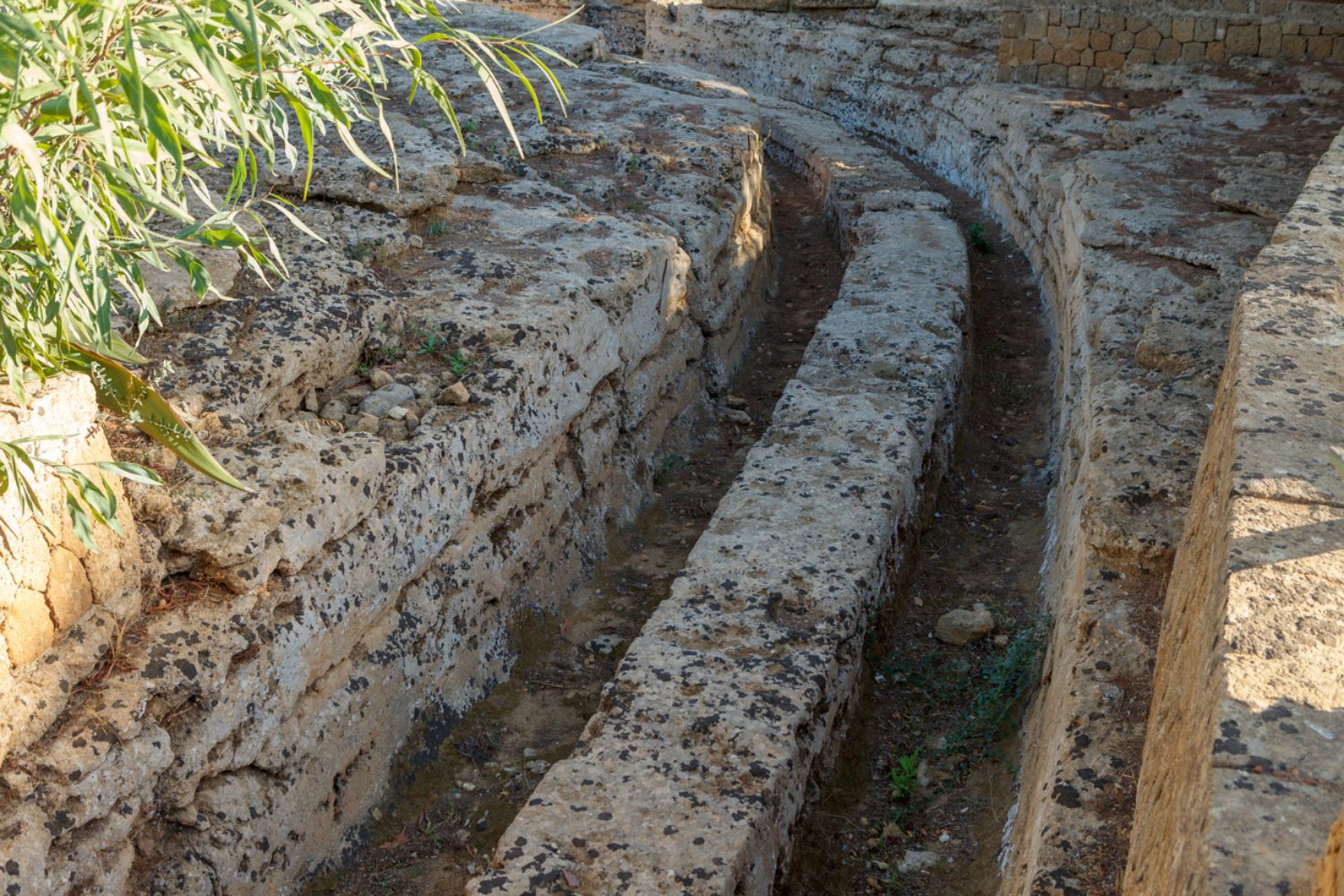
Additional Costs and Considerations
In addition to budgeting for the main factors in replacement septic tank costs, homeowners are advised to consider other possible expenses as well. These may involve tree removal, engineering, or installation of new septic lines.
| Septic Tank Replacement Cost Factor | Average Cost Range |
| Engineering and design | $125 to $200 |
| Excavation | $1 to $5 per square foot (materials and labor) |
| Landscaping | $5 to $24 per square foot (materials and labor) |
| New septic lines | $50 to $150 per linear foot (materials and labor) |
| Repairs | $410 to $15,000 (materials and labor) |
| Replacement | $2,000 to $20,000 (materials and labor) |
| Septic aerator | $300 to $900 (materials and labor) |
| Tree or root removal | $200 to $2,000 (materials and labor) |
Repair vs. Replacement
Repairing a septic tank or drain field costs less than replacing it. The process is also likely to be less disruptive. However, a repair may not address the underlying system issue and could lead to more frequent maintenance before replacement is finally the only option. Repairing a drain field alone can cost $2,000 to $15,000, while pumping and cleaning a septic tank averages $410. Professionals will recommend 3 to 5 years when asked how often a septic tank should be pumped, depending on the system and amount of use.
Replacement offers homeowners a longer-term solution for their septic system issues, but typically at a higher upfront cost. For example, removing an old septic system to make room for a replacement can cost $45 to $200 per hour in addition to the price of the new system, which averages $6,000.
A homeowner may also have to deal with excavation, disruption to their outdoor living space, and the need for professional landscaping after a replacement. When given the choice between the two options, homeowners are advised to consider their immediate budget and future plans, such as an upcoming home sale.
Engineering and Design
Some septic systems are more complex than others. When installing a mound system or any septic component in areas with challenging soil conditions, homeowners may prefer to hire an engineer to design the system to ensure it meets the specific site and environmental requirements.
Engineering consultant hourly rates can range from $125 to $200, depending on the design’s complexity, the engineer’s expertise, and the site’s specific requirements. While having a professionally designed septic system adds to the upfront cost, it ensures that the system will comply with regulations and remain functional and efficient with proper maintenance.
Excavation
For septic systems, excavation is needed to remove soil and create space for the septic tank and drain field. It may also include preparation of the installation site by clearing vegetation or leveling the ground. The septic tank or drain field may not function properly without excavation.
Excavation costs generally range from $1 to $5 per square foot. The final cost can be influenced by the soil type, accessibility of the property, and the amount of soil that needs to be moved. Excavation work could require a permit and is best handled by professionals due to the need for specialized heavy equipment, such as an excavator.
Tree or Root Removal
Whether homeowners are installing or replacing a septic tank or drain field, tree or root removal might be a necessary step that’s not always included in excavation projects. Trees and roots can interfere not only with the installation but the future functioning of the septic system. Over time, roots can grow into and damage septic pipes, leading to leaks, backups, and expensive repairs.
Removing a tree or its roots can cost anywhere from $200 to $2,000, depending on the size of the tree or root, type, and location. Homeowners may want to leave room in their budget for tree or root removal until the system designer or contractor says otherwise.
Landscaping
A septic tank or drain field replacement can leave a yard brown and bare or even cause damage to other parts of the yard’s landscaping, but the best lawn care services (such as TruGreen and Lawn Love) can make the property look pristine again.
After a septic system installation or replacement, landscaping tasks can include planting grass, placing shrubs, or making more elaborate upgrades like stone walkways or patios. Depending on the services needed, landscaping costs can range from $5 to $24 per square foot.
Homeowners will want to build landscaping costs into their budget unless they have the time and talent to undertake the project themselves. Otherwise, they may be left with a less-than-attractive outdoor space that can hurt their curb appeal.
New Septic Lines
Sometimes, new septic lines are required when homeowners are replacing a septic tank or drain field. This is especially true if the old lines are damaged or no longer compatible with the new system’s components. New septic lines cost between $50 and $150 per linear foot, depending on the chosen material, the length of the line, and the difficulty of installation. Septic lines can range in length from a few feet to several hundred feet, depending on the system’s layout and the distance to the house.
It’s common to replace septic lines during a tank or drain field replacement, so homeowners will need to have the condition of their existing septic lines evaluated before committing to a budget.
Septic Aerator
A septic aerator helps break down waste in a tank. It reduces the strain on the drain field and can extend the septic system’s life overall. An aerator itself costs between $200 and $600. Including installation, a septic aerator replacement can cost anywhere from $300 to $900.
When estimating a septic system replacement cost, homeowners may be interested to know that a septic aerator is essential in aerobic septic systems but not typically used in standard anaerobic systems. However, it could be required in any system that’s not operating as efficiently as it needs to be when breaking down waste, such as in areas near water bodies or with high water tables.
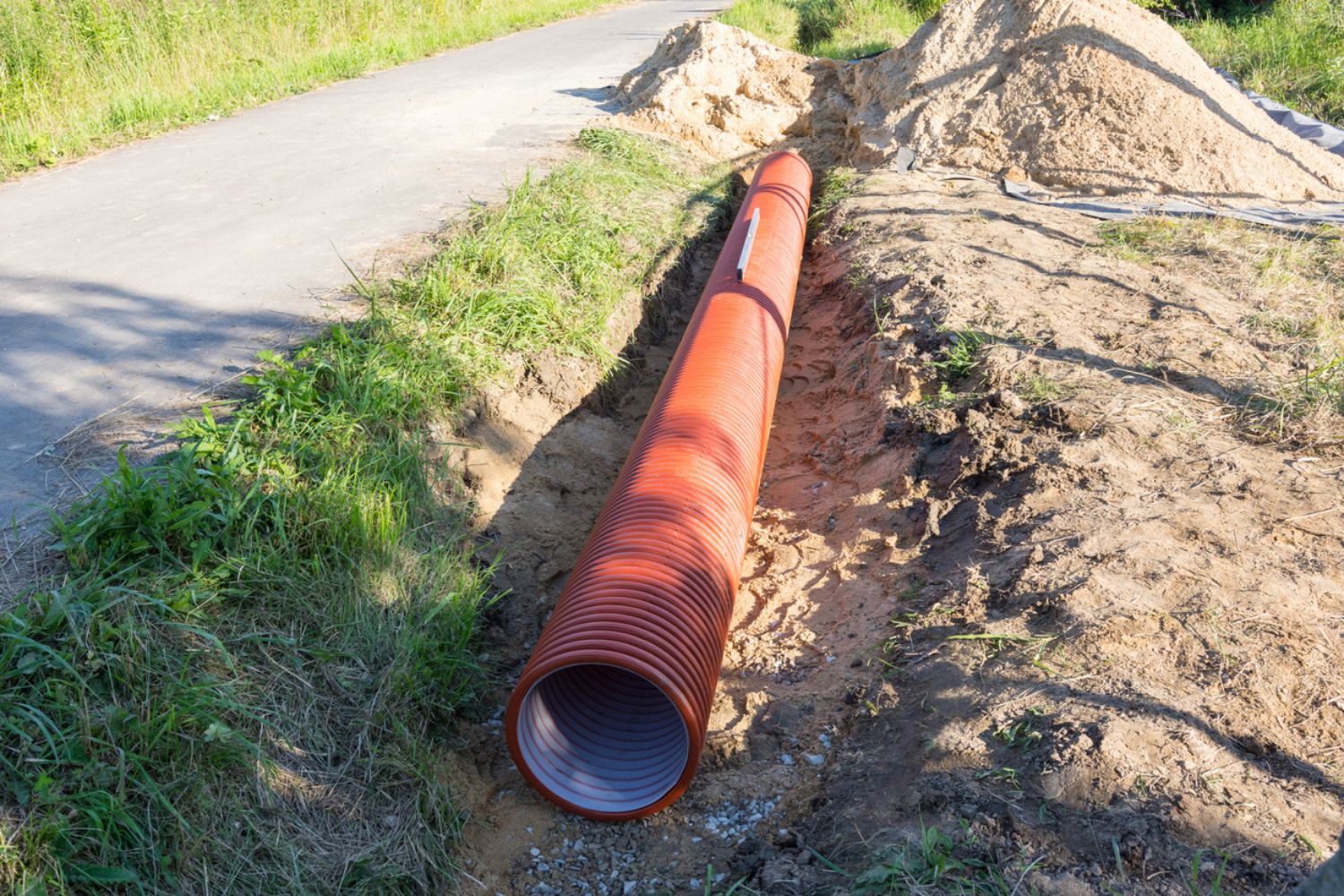
Types of Septic Tanks and Drain Fields
How much does a septic system cost? It depends on the type of tank and drain field. Homeowners can consider several types of septic tanks and drain fields, each with unique advantages, limitations, and price points. Some of the most popular types are explored below.
| Type of Septic Tank and Drain Field | Average Cost |
| Aerobic drain field | $7,000 (with installation) |
| Anaerobic drain field | $5,000 (with installation) |
| Evapotranspiration drain field | $8,000 (with installation) |
| Mound drain field | $12,000 (with installation) |
| Concrete septic tank | $2,300 to $6,500 (with installation) |
| Fiberglass septic tank | $1,200 to $2,000 (before installation) |
| Plastic septic tank | $500 to $2,500 (before installation) |
Aerobic Drain Field
Aerobic drain fields cost an average of $7,000, making them one of the more expensive drain field varieties. However, they come with certain benefits. To start, aerobic systems require less land than other systems. This allows homeowners with smaller properties to take advantage of the benefits of a septic system when they either cannot or prefer not to connect their home to the public water system.
Also, aerobic drain fields are more efficient. These systems use an aerator and electrical circuit to provide oxygen to aerobic bacteria, leading to faster waste breakdown. However, they require a consistent power supply, and septic tank maintenance costs can be higher due to electrical components within the system.
Anaerobic Drain Field
Anaerobic septic systems are considered to be a basic or traditional type of system. The operation process is straightforward: waste flows from the house to the septic tank and into the drain field. Unlike aerobic drain fields, anaerobic systems don’t require pumped oxygen to break down waste. However, they generally need more land for the drain field for more natural exposure to air.
An entire anaerobic system costs $5,000, with the drain field installation making up approximately $3,500 of the whole cost. The main advantages of anaerobic drain fields are their simplicity and lower prices, especially compared to anaerobic systems. However, homeowners with smaller properties may be unable to take advantage of an anaerobic system and drain field.
Evapotranspiration Drain Field
An evapotranspiration drain field costs an average of $8,000. In these systems, wastewater is treated and allowed to evaporate in an open-air tank rather than absorbed into the soil. This unique approach reduces the risk of contaminating the local water table. It’s also an ideal approach in regions with poor soil absorption. Homeowners living in drier climates might prefer an evapotranspiration drain field over other types, especially if there is a heightened concern about groundwater contamination.
Since evapotranspiration drain fields operate differently from traditional systems, homeowners need to understand the different maintenance needs of an evapotranspiration drain field to prevent premature repairs or replacements. Maintenance for an evapotranspiration drain field may include water level monitoring and prevention of vegetation overgrowth near the evaporation area.
Mound Drain Field
Mound drain fields come at a higher cost. The average installation price is $12,000 due to the need for extra materials and construction. Mound systems are built above the ground and use a mound of sand to cover the pipes. Mound drain fields are ideal for shallow soil depth or high groundwater areas. Locations with poor soil conditions can also benefit from a mound drain field.
Before committing to this type of drain field, homeowners will want to speak with a professional about the septic tank pump cost and maintenance needs, as mound drain fields require a pump to transport the effluent (partially treated wastewater) from the tank to the mound. A pump adds to the overall cost and requires electricity to operate, leading to increased energy consumption over the system’s lifespan.
Concrete Septic Tank
Septic tank costs vary by material, and concrete is one of the more affordable varieties. A concrete septic tank typically costs between $700 and $2,000 for the tank itself. After installation, costs range from $2,300 to $6,500. Concrete is a common septic tank material available in several sizes, allowing homeowners to choose a model that fits their unique household needs and property size.
Concrete tanks are also quite durable and can last for several decades. However, they can be affected by soil movement. This can make them prone to cracks or separation over time. Homeowners are advised to schedule manual inspections regularly to diagnose cracks early. The best septic tank cleaning services offer the best septic tank treatments, such as pumping, inspecting, and cleaning on the recommended schedule.
Fiberglass Septic Tank
The average cost of a fiberglass septic tank is between $1,200 and $2,000, not including installation. Fiberglass is a less common material choice than concrete but offers several benefits. Unlike concrete, fiberglass won’t deteriorate over time. Fiberglass is also lighter, making a fiberglass tank easier to transport and install than a concrete tank.
However, fiberglass tanks are prone to damage during installation. Their lower weight also makes them more likely to shift in the soil, especially if moisture levels fluctuate quickly or often. As with any septic tank, regular inspections are crucial to spotting issues early on and avoiding significant damage.
Plastic Septic Tank
Plastic septic tanks are often the most cost-effective option for homeowners, costing as little as $500 plus installation. Larger models can cost as much as $2,500. Compared to concrete tanks, plastic tanks are less prone to cracking. They might even be made from recycled materials and are considered an environmentally friendly option.
Similar to fiberglass tanks, plastic septic tanks are lightweight. While this can make them easier to transport, they are more vulnerable to damage during the septic tank installation. Septic tank companies may warn against installing them in high water table areas, as they can be subject to buoyancy issues.
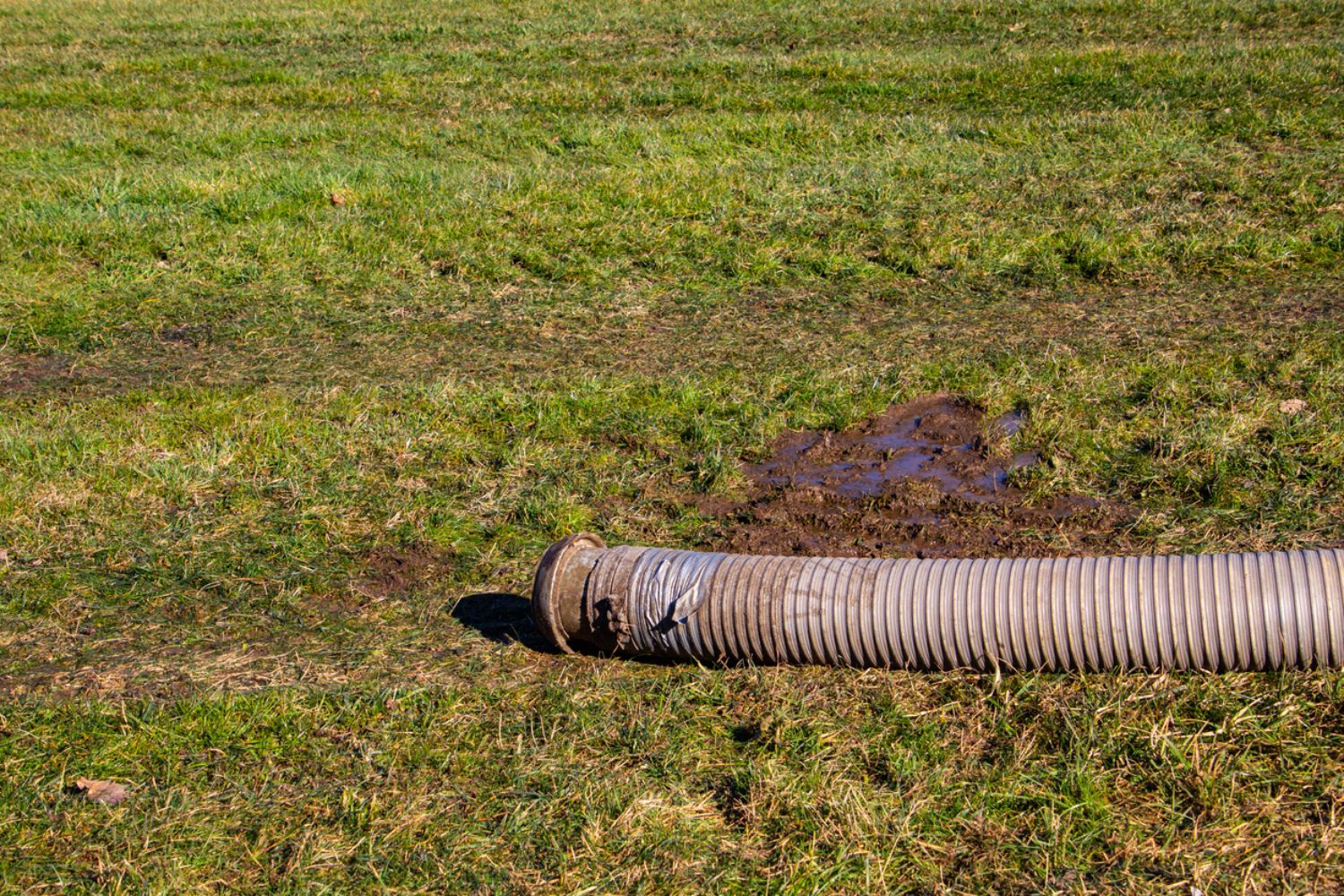
Do I need to replace my septic tank and drain field?
Several indicators can point toward the potential need for replacement of a septic tank and drain field. Homeowners who recognize the signs of septic system failure early on can prevent more significant issues and ensure the long-term functionality of their septic system.
Pooling Water or Sewage
Pooling water or sewage is one of the first signs of a septic system issue. Pooling typically happens when a septic tank is full or the pipes leading to the drain field are blocked. Blockages can be caused by debris or tree and shrub roots that have grown into the pipes. No matter the cause, wastewater is forced to the surface instead of being absorbed into the ground, creating pools of contaminated water.
As Hiller explains, “The presence of water pooling in the yard, especially near the drain field, raises a red flag. This could signify that the drain field is oversaturated and thus unable to effectively filter the water.”
Homeowners who notice unexpected wet areas or standing water in their yards, especially after heavy rain, will want to have their septic system evaluated for repair or replacement.
Unpleasant Odors
“The accumulation of water may be accompanied by a foul odor emanating from the area around the septic tank and drain field, signaling further issues,” warns Hiller. Homeowners who notice a foul smell around their septic tank or drain field should look for other signs of system problems. Odors usually occur when a septic tank is overflowing or when there’s a leak somewhere in the system. Either way, gases and sewage smells are released, quickly creating a less-than-pleasant scent.
There are other potential causes of unpleasant odors near a septic system. Blocked vent pipes, dry drains, and broken seals can also allow gases to escape. The good news is that these issues are generally easier to fix than overflowing or leaking tanks. Unpleasant odors are never normal for an appropriately functioning septic system, so homeowners will want to call a professional to have it investigated quickly.
Slow Drains
Water draining slowly from sinks, bathtubs, or toilets can indicate a septic system issue. A blockage in the pipe is the typical cause of the sluggishness, though an overfilled septic tank is also a suspected problem. Either way, a home’s entire wastewater system can be affected.
As Hiller explains, “When there is slow drainage throughout a home, it often indicates that the septic tank is full or there are issues in the drain field that hinder proper drainage.”
If ignored, a seemingly innocent slow drain can lead to backups in a home and overflows in a drain field. It’s best to investigate slow draining as soon as possible, mainly when observed consistently throughout the house rather than in one area. A septic system professional can diagnose the cause of a slow drain to determine whether it’s a simple clog or a more severe issue with the system.
Unusually Green Grass
While green grass is typically considered a sign of a healthy lawn, an overly green area of the yard above the septic system could indicate a problem. Lush, green patches of grass over a drain field can be caused by sewage leakage. The extra nutrients act as a fertilizer to the grass, which signals that the system requires repair or replacement.
It’s important for homeowners to keep the location in mind when they spot excessively green grass. Only the patches above a septic tank or drain field are caused by sewage or system issues. If the patches are found elsewhere, there’s another cause to consider, such as watering differences or different grass types.
Plumbing Clogs or Backups
“If sewage starts backing up into the house, particularly in lower-level rooms like basement bathrooms, this serves as a clear indication of septic system failure,” says Hiller. Clogs and backups usually occur when a septic tank is full or when there is a blockage in the system. If waste can’t flow as needed, it’s forced elsewhere within the system. This can lead water or sewage to back up into sinks, bathtubs, or toilets when being flushed. Gurgling noises are also common when there are clogs or backups.
It’s recommended that homeowners seek out assistance as soon as possible when dealing with a suspected clog or backup. Ignoring these signs can lead to sewage overflow in the house or the drain field.
Water Contamination
Contaminated water poses serious health risks to anyone using it for drinking, cooking, or bathing. The consequences of ingesting contaminated water from sewage include gastrointestinal illnesses and nitrate poisoning. When a septic system fails, it can leach waste into the soil. If a well is nearby, the risk of contamination is serious.
If there is any suspicion of contamination, a water test needs to be conducted as soon as possible. If contamination is confirmed, water consumption needs to stop immediately, and a professional is necessary to assess the septic system. Once the exact location of the contamination has been diagnosed, repairs or replacements can be discussed with the property owner.
Septic Tank and Drain Field Replacement: DIY vs. Hiring a Professional
At first glance, installing a septic tank and drain field may seem straightforward. Enthusiastic homeowners, especially those on a budget, may be tempted to pick up a shovel and tackle the job themselves to save on septic drain field replacement costs.
But the truth is that the job is more complicated than it seems. In fact, local regulations often prohibit DIY septic system repairs and replacements, leaving homeowners with hiring a professional as their only option.
According to Hiller, “Homeowners can perform basic tasks such as clearing the area and landscaping after the septic system is installed. However, hiring a professional ensures compliance with local codes, accurate design and installation, and long-term system reliability, avoiding costly repairs in the future.”
The good news is that working with an experienced septic contractor has several advantages. To start, professionals bring the right blend of experience to the table. They possess specialized knowledge in soil science, plumbing, and environmental regulations, all of which play a role in safe and responsible septic practices. Septic contractors also understand local permit requirements and regulations and can ensure compliance.
Additionally, professionals have access to necessary heavy equipment. It can be challenging and expensive for a homeowner to secure an excavator, bulldozer, or trencher to efficiently and safely replace a septic system.
Finally, professional installers understand how to minimize risks during installation by adhering to safety protocols. They’re also trained to reduce the environmental impact of septic tank and drain field installations.
While a DIY septic tank and drain field replacement may sound tempting and feasible, hiring a professional is the best route, especially for legal and environmental reasons. Working with an experienced professional can prevent system failure, costly repairs, and potential legal liabilities, making it a wise choice for any homeowner.
How to Save Money on the Cost to Replace a Septic Tank and Drain Field
Replacing a septic tank and drain field can be a significant investment. However, there are several ways for homeowners to avoid or delay these costs or, if a replacement is necessary, absorb them over time. Here are some tips to help homeowners save on septic tank and drain field costs.
- Keep up with regular inspections and maintenance. Homeowners are encouraged to regularly check the various components of their septic system and perform routine maintenance, such as tank treatments. Doing so can help to avoid costly repairs or replacements.
- Pump the septic tank regularly. Over time, solid waste can build up in a septic tank and clog the pipes. This can lead to poor efficiency and expensive leaks. A septic tank should be pumped every three to five years to prevent costly repairs or replacements.
- Be mindful of water usage. Using less water can reduce the strain on a septic system, so homeowners can look at fixing leaks, using low-flow fixtures, and running full loads in washing machines and dishwashers to conserve water and reduce maintenance visits.
- Flush with caution. To prevent damaging their system, homeowners will need to avoid flushing anything other than toilet paper and human waste. Grease, oil, and harsh chemicals can cause damage and blockages in a drain that leads to a septic tank.
- Get multiple quotes. When a replacement is inevitable, homeowners can contact several septic system professionals for detailed quotes to compare rates and find the best option within their budget.
- Consider financing options. If a replacement cost is out of budget, homeowners can ask about financing options offered by their contractor or consider taking out one of the best home equity loans (such as from U.S. Bank or Flagstar Bank). Federal and state loans and grants are also available for septic system replacement or repairs.
- Seek out incentives and rebates. Some local governments and utility companies offer incentives or rebates for installing environmentally friendly septic systems. Seeking out these options can help homeowners absorb replacement costs.
- Invest in protection. Homeowners can invest in a home warranty that covers their septic system. For a regular premium, homeowners can rely on professional repair services without having to worry about excessive out-of-pocket expenses. The best home warranty for septic systems (such as from Cinch Home Services or Choice Home Warranty) can serve as a priceless safeguard.
Questions to Ask About Septic Tank and Drain Field Replacement
When a septic tank and drain field are needing replacement, asking a contractor the right questions is crucial. Then a homeowner can be sure they’ve hired a professional with the right experience at a fair price.
- Are you licensed and certified for this type of work?
- How much experience do you have with septic tanks and drain fields?
- Can you provide references from previous clients?
- What does the initial estimate include? Does it include permits or overages for materials?
- Do you offer a guarantee on your work or a septic system warranty?
- What type of septic system do you recommend for my property?
- What measures will you take to protect my home and landscaping during the job?
- How long will the replacement take?
- Do you anticipate any challenges during the replacement process? If so, how do you plan on handling them?
- After the replacement is complete, what type of maintenance or follow-up services can you provide?
FAQs
A functioning septic tank and drain field are vital for any home that’s not connected to the city’s sewer system. But over time, even the best-maintained systems may require replacement.
The cost to replace septic tank and drain field systems or components can be an unwelcome and significant expense. However, understanding the factors that influence these costs and knowing when replacement is absolutely necessary can help homeowners make informed decisions that fit their budget and property.
Q. What is the life expectancy of a septic drain field?
Homeowners may wonder how long a septic tank lasts. The average lifespan of a septic drain field is 20 years. Regular annual inspections and consistent maintenance are crucial in extending the lifespan of a septic system and drain field. Homeowners can practice water conservation and avoid flushing chemicals to help improve a drain field’s longevity. However, some factors like local climate are out of a homeowner’s control and can shorten the lifespan.
Q. How often do you need to pump a septic tank?
On average, a septic tank should be pumped once every 3 to 5 years, though the actual septic tank pumping cost can vary. Every septic system is different and has unique pumping requirements. Factors that influence pumping frequency include the size of the tank, household size, and usage patterns. In some scenarios, a septic tank may require an annual pump-out, while others may be able to go 5 years or more without pumping.
Q. How deep is a septic tank?
The depth of a septic tank depends on the soil type, tank model, and environmental conditions. However, most can be installed from 4 inches to 4 feet underground. Deeper isn’t necessarily better, as too much weight from the soil above can damage the tank over time. However, septic tanks should be buried deeper in colder climates to prevent freezing.
Q. What size septic tank do I need?
The ideal septic tank size depends on several factors. The first to consider is home size. Larger homes with additional bedrooms (and occupants of those rooms) tend to have more wastewater. The same can be said for the number of bathrooms in a house. Multiple sinks, toilets, and bathtubs increase the need for a larger septic tank. Smaller homes can typically get by with a 750-gallon tank, while larger homes may need a septic tank that can hold 1,250 gallons.
Q. How big should a drain field be?
A drain field’s size is best determined by the number of bedrooms a property has and the type of soil it’s built on. Larger homes tend to need a larger drain field. Also, a more extensive drain field is likely necessary if the soil absorbs water slowly. Sometimes, a professional engineer may need to design a drain field, especially if the soil is very slow to absorb water.
